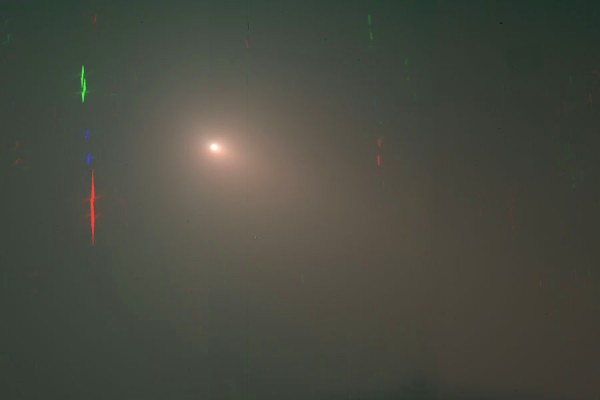After our comet ISON observing session I have been asked what it is like to take a comet photograph with Keck. An apt question as all of the recent observers were taking spectra, not photos.
The answer? Not very pretty.
A few years back Greg Wirth and I took some frames of comet Hartley 2 with Keck 2. When I processed the frames into a color photo the results were less than impressive.
Comets are big. While the nucleus is quite small, we do not see the nucleus even with the enormous power of a 10 meter telescope. It is hidden in the coma and quite dark, the average nucleus is a shade of dark gray equivalent to charcoal.
The coma and tail are very extended, much larger than the field of view of the telescope, thus the entire frame is inside the coma. The photo of Hartley 2 Greg and I took was no exception.. The image is notable for its complete lack of any interesting structure. There are no jets, shells or other inner coma detail visible. The tail is simply a general brightening to the southwest (lower right in this image).
Small telescopes, in the hands of amateurs, are going to produce the prettiest images of comets. With fields of view measured in degrees, not arcminutes, the comet is going to be seen in all its glory.


